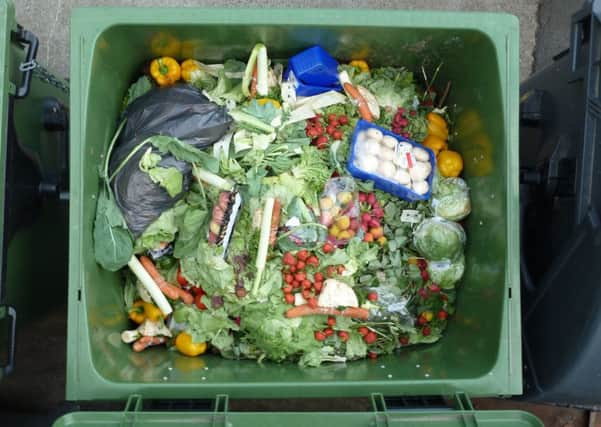Andrew Vine: This throwaway culture of wasted food is way past its own sell-by date


What was still fit to eat went to a local food bank. Even so an awful lot ended up in the bin, and as I wheeled it to the gate to be collected, it occurred to me that I might as well have chucked out a handful of £10 notes.
One of the volunteers at the food bank said it bothered him how much that is perfectly edible gets thrown away by people who trust sell-by dates on packaging more than their own common sense.
Advertisement
Hide AdAdvertisement
Hide AdHe’s told on a regular basis by people who make donations that they would have brought more food that they did not need, but for the fact that it was past the sell-by date. And when he asks them what it was, it becomes clear that it could have been cooked and eaten perfectly safely, quite possibly a couple of weeks afterwards.
That’s a big frustration for him. He has people in desperate financial straits queuing up for something to put on the table. Demand always rises in winter, when the hot meals most of us take for granted can be scarce for those relying on the food bank, but he doesn’t have the resources to give them as much as they need, or he would like.
Yet he knows that a fair proportion of the people shopping in the megastore half-a-mile away and piling their trolleys high with two-for-one offers will probably decide a week later that they don’t need the extra pack and dump it unopened in the bin.
The waste of food is being discussed by the Environment, Food and Rural Affairs Select Committee tomorrow and the issue needs a thorough airing because it’s a national disgrace when people are going hungry.
Advertisement
Hide AdAdvertisement
Hide AdThe sheer scale of waste is staggering – about two million tonnes every year thrown out by supermarkets, restaurants and individuals. That amount is impossible to envisage because it is so mind-boggling. The charity Wrap, which compiled the figure, says 56 per cent of the waste is avoidable.
To their credit, Britain’s biggest supermarkets are trying to do something about their part in this, as are restaurant chains, by signing up to a project to redistribute 30,000 tonnes of food to charities helping the poor by 2020, equating to 60m meals.
Links between supermarket chains and charities already exist, but a concerted national drive is long overdue.
There are lessons to be learned from other countries. Denmark is one of the most successful in Europe in cutting waste, and one of its leading supermarkets slashed the amount of bread being thrown away by the simple expedient of baking smaller loaves and dropping the price accordingly.
Advertisement
Hide AdAdvertisement
Hide AdEven so, action by the big retailers is not going to cut down the amount of food going into household wheelie bins every week.
But if waste is to be tackled – and unwanted food to get into the hands of those who need it – there needs to be fundamental change in the way it is sold to us and how we shop.
Two-for-one deals are an invitation to waste, because if shoppers feel they are getting something at no cost, they do not value it anything like as much as the item they paid for.
It’s a short step from there to throwing it away without a second thought. The increasing number of people doing their grocery shopping online to save time in busy lives is not helping, because the websites often encourage customers to spend more to qualify for special offers.
Advertisement
Hide AdAdvertisement
Hide AdUnthinkable though it would have seemed to earlier generations who made daily visits to the butcher, baker and greengrocer to buy only what they needed for that evening’s dinner, an avalanche of food that consumers do not really need is pouring into households.
And because so many of the multi-buy deals focus on food which ideally should be used within a few days, meat, fish and dairy products lurking at the back of the fridge pass beyond the sell-by date before they are eaten.
But sell-by dates impose their own tyranny. Many are too short, and if household waste is to be cut, consumers need to develop more confidence about how long food remains fit to eat.
However that confidence has been eroded by packaging which carries cooking instructions as well as a deadline for use. We’ve become conditioned to believing that once the date is past, the food is inedible.
It is time that more people learned to trust their judgement – and resist the temptation to buy more than they need.
After all, who wants to throw money, in the form of discarded food, in the bin?